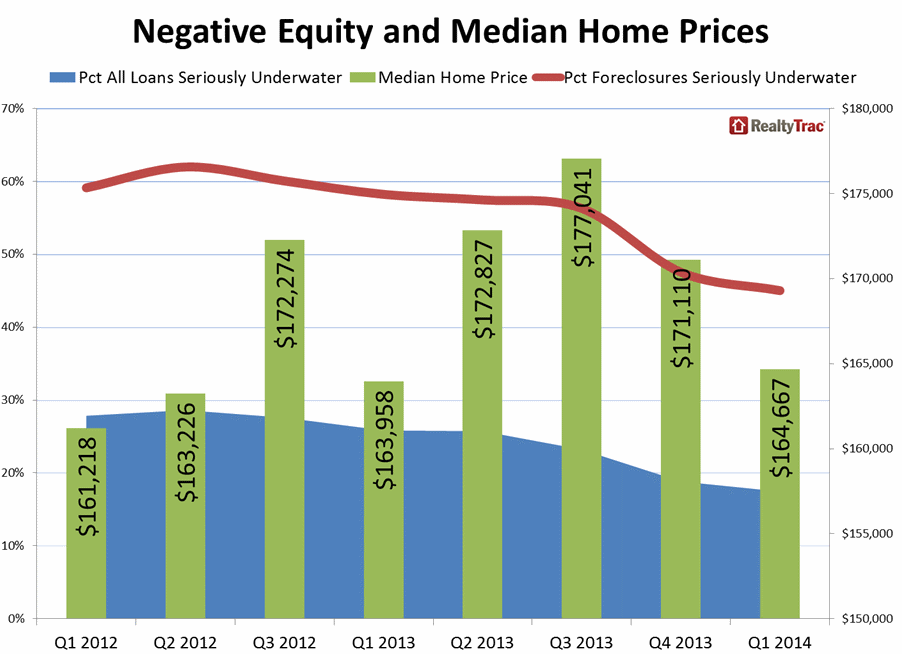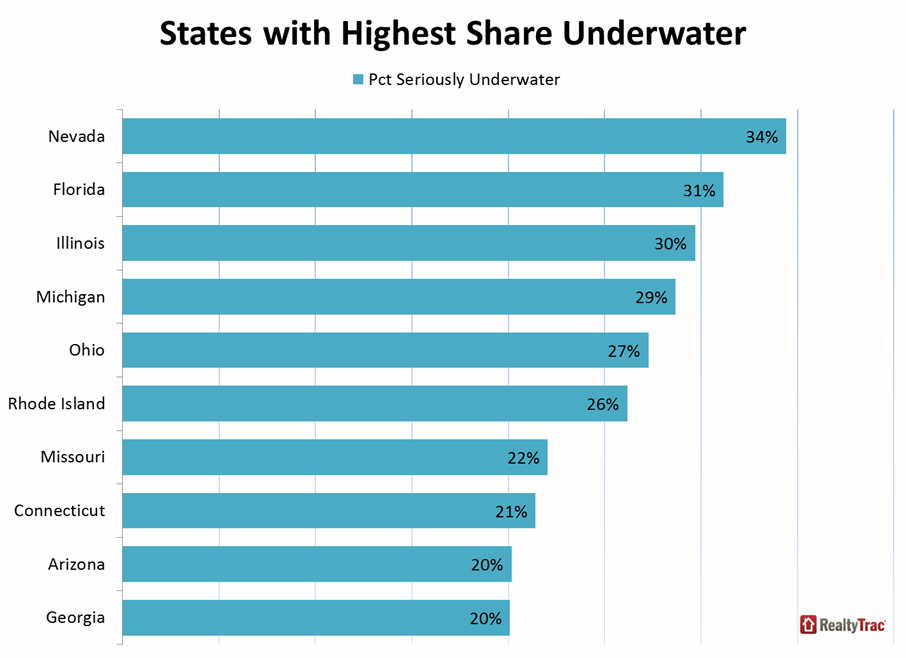Homes with serious negative equity numbers have now declined to the lowest point in at least two years RealtyTrac said today. The company, which began tracking so-called underwater properties in the first quarter of 2012, estimates that in the first quarter of 2014 9.1 million U.S. homes had loan balances at least 25 percent higher than the properties market value or a loan-to-value ratio (LTV) of 125 percent. This is 17 percent of all U.S. properties with a mortgage.
In the fourth quarter of 2013 RealtyTrac said there were 9.3 million properties or 19 percent of mortgaged homes that were that seriously underwater and in the first quarter 2013 there were 10.9 million or 26 percent. The recent peak in negative equity was the second quarter of 2012, when 12.8 million U.S. residential properties representing 29 percent of all properties with a mortgage were seriously underwater.
With the rapid growth of home values in 2013 another 8.5 million homes were close emerging into positive territory in the first quarter with between 90 percent and 110 percent loan-to-value ratios. That near-equity group represented 16 percent of mortgaged homes and had grown from 8.3 million properties in the fourth quarter of 2013.
"U.S. homeowners are continuing to recover equity lost during the Great Recession, but the pace of that recovering equity slowed in the first quarter, corresponding to slowing home price appreciation," said Daren Blomquist, vice president at RealtyTrac. "Slower price appreciation means the 9 million homeowners seriously underwater could still have a long road back to positive equity.

The percentage of properties in foreclosure that had negative value declined from 48 percent in the fourth quarter to 45 percent in the first while those with positive equity increased to 35 percent from 31 percent.
"The relatively high percentage of foreclosures with equity is surprising to many because it would seem homeowners with equity could easily avoid foreclosure by leveraging that equity by refinancing or with an equity sale of the home," Blomquist noted. "But many distressed homeowners with equity may not realize they have equity and in some cases have vacated the property already, assuming that foreclosure is inevitable."
The states with the highest percentage of residential properties seriously underwater in the first quarter were Nevada (34 percent), Florida (31 percent), Illinois (30 percent), Michigan (29 percent), and Ohio (27 percent). The metro areas with high levels of negative equity were Las Vegas (37 percent), Lakeland, Florida., (36 percent), Palm Bay-Melbourne-Titusville, Florida (35 percent), Cleveland (35 percent), Akron (34 percent), and Detroit (33 percent).

What the company refers to as "equity-rich properties," those with a least 50 percent equity, now total 9.9 million or 19 percent of mortgaged properties compared to 9.1 million or 18 percent in the fourth quarter of 2013. The metro areas with the highest percentage of equity rich homes were San Jose, (39 percent), Honolulu (35 percent), San Francisco (35 percent), Poughkeepsie, (34 percent), and Los Angeles (32 percent).







